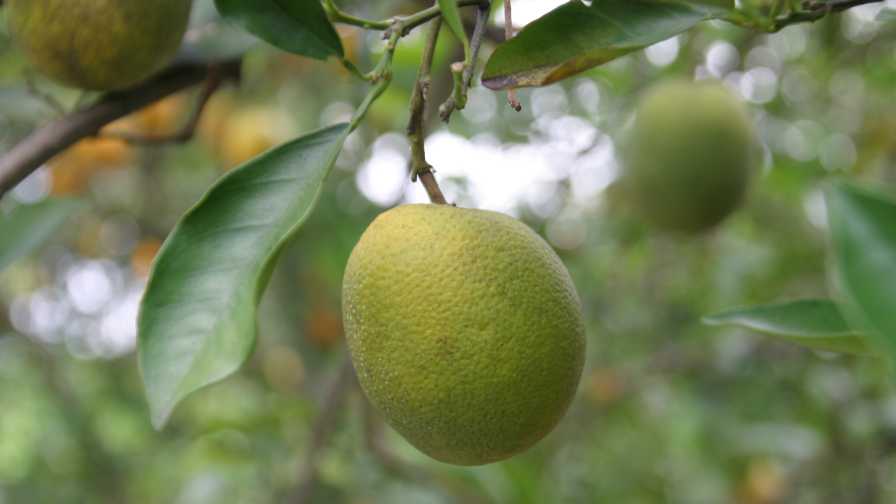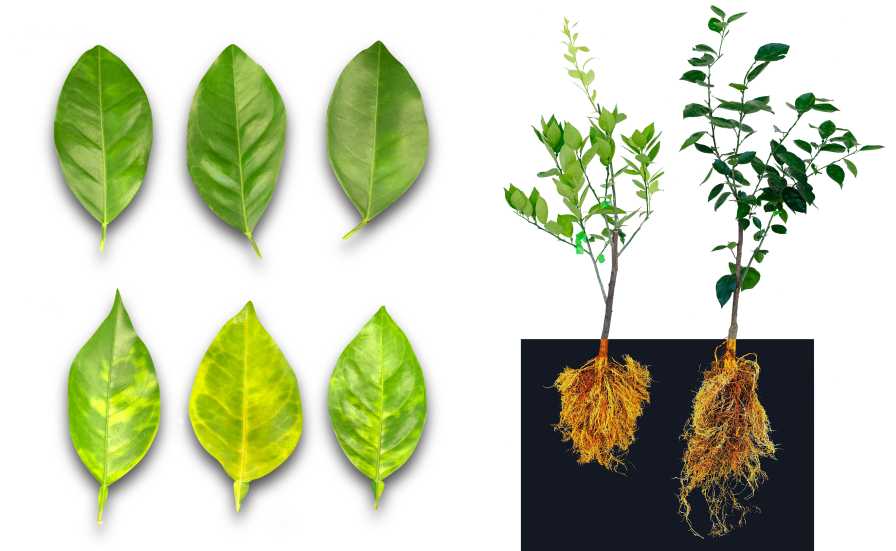
Can oak extract be a solution for citrus greening? Early indications look promising.
Photo courtesy of UF/IFAS
Huanglongbing (HLB) constitutes a threat to global commercial and sustainable citrus production.
All members of the Rutaceae family are susceptible to HLB, and there is no known cure for the disease, which severely reduces citrus tree productivity and fruit quality and fosters tree decline and death.
Alternative Approaches
Alternative strategies focus on the identification of new, potentially effective antimicrobial molecules against the HLB bacteria. During the past few decades, antimicrobial molecules were compromised, and the use of antibiotics has become less and less effective. The decreasing effectiveness of antibiotics has pushed incentives for research of novel, effective, and affordable compounds.
In Florida, healthy citrus plants have been observed under natural conditions within ecological arboreal islands called hammocks, located under the canopy drip line of oak trees. This work was designed to identify the components of this ecological interaction, which may protect citrus trees from HLB and become a commercial treatment for citrus growers.
Our work is the first to show the application of aqueous (liquid) oak leaf extracts has a positive effect on HLB-affected citrus plants and can reduce HLB-related symptoms and Candidatus Liberibacter asiaticus (CLas) — HLB bacteria — titer.
We identified antibacterial activity in the aqueous oak extracts against CLas, which showed a reduction of CLas titer in treated citrus trees, along with no phytotoxic effects. Moreover, our data show an overall significant recovery process that contributed to minimizing typical HLB symptoms in conjunction with CLas titer reduction, which contributed to improving the physiological process.

Comparison of citrus leaves and whole plants treated with oak extract and water control. A = top row) Leaves treated with oak extract did not show the typical chlorotic symptoms and yellow spots. B = bottom row) Control leaves showed severe chlorosis and typical HLB symptoms referred to as blotchy mottle. C = tree on left) CLas-infected citrus plants showing typical light green leaves and reduction of root structure. D = tree on right) Citrus plants treated with oak extract showing darker green leaves and increased root structure.
Photo courtesy of UF/IFAS
Starch Reduction
We evaluated physiological and molecular parameters on CLas-infected citrus after oak crude extract treatments. Typical HLB symptoms were greatly reduced, and the effects were consistent with the significant reduction in starch accumulation in the leaves and the different regulation of starch-related genes.
We found the treatment restored expression of enzymes involved in carbohydrate metabolism.
Massive starch accumulation is one of the most prominent symptoms of HLB infections, as excessive starch buildup causes disintegration of the chloroplast thylakoid system. Furthermore, the induction of starch breakdown inside the chloroplast may contribute to increased chlorophyll content, improving stomatal conductance followed by an increased rate of photosynthesis and rapid recovery.
In HLB-infected leaves, several enzymes related to starch synthesis, degradation, and transport are differentially regulated in response to CLas infection. For example, the starch breakdown machinery is repressed. These results indicate the carbohydrate metabolism was recovered after the oak extract treatment and, consequently, both starch level and chlorosis decreased.
Symptom Reduction
We also measured other related metabolic changes such as electrolyte leakage, which arises from membrane damage, causing cell death as a direct consequence of extended damage due to stress. Treated citrus plants reduced the electrolyte leakage in leaves, suggesting a reduction of stress caused by CLas. These intriguing observations indicate that the antibacterial property of the oak extract reduces CLas titer followed by a general reduction of all typical HLB symptoms.
Given that transpiration-driven water flow is required for nutrient and plant nutrient acquisition from the soil, stomatal conductance is tightly linked to water uptake by roots. In this work, the macronutrient level in roots, stems, and leaves was measured, and an increase of all the macroelements was found in roots. Chlorophyll content was higher in plants treated with the oak extract. Root growth and the absorption of nutrients by roots, together with higher stomata conductance, resulted in increased macronutrient uptake accompanied by an increased content of chlorophyll.
In conclusion, aqueous extract from Q. hemisphaerica decreases CLas titer and improves the overall tree physiology of HLB-affected citrus. Importantly, HLB-affected citrus trees recovered after the treatment, indicating the deleterious effects of CLas can be reversed with oak extract treatments. Overall, the information provided from this study contributes in the management and treatment for a novel control strategy and represents the first potential organic cure for growers to manage HLB more effectively.









